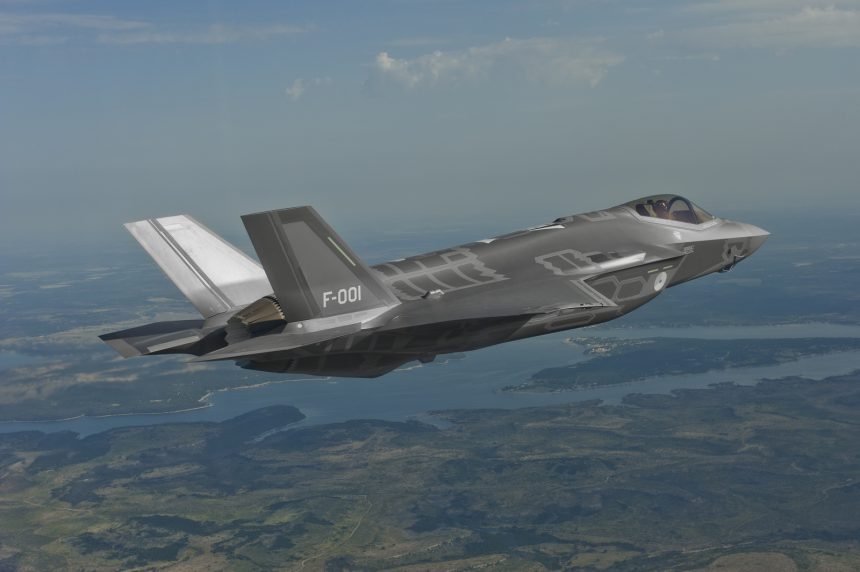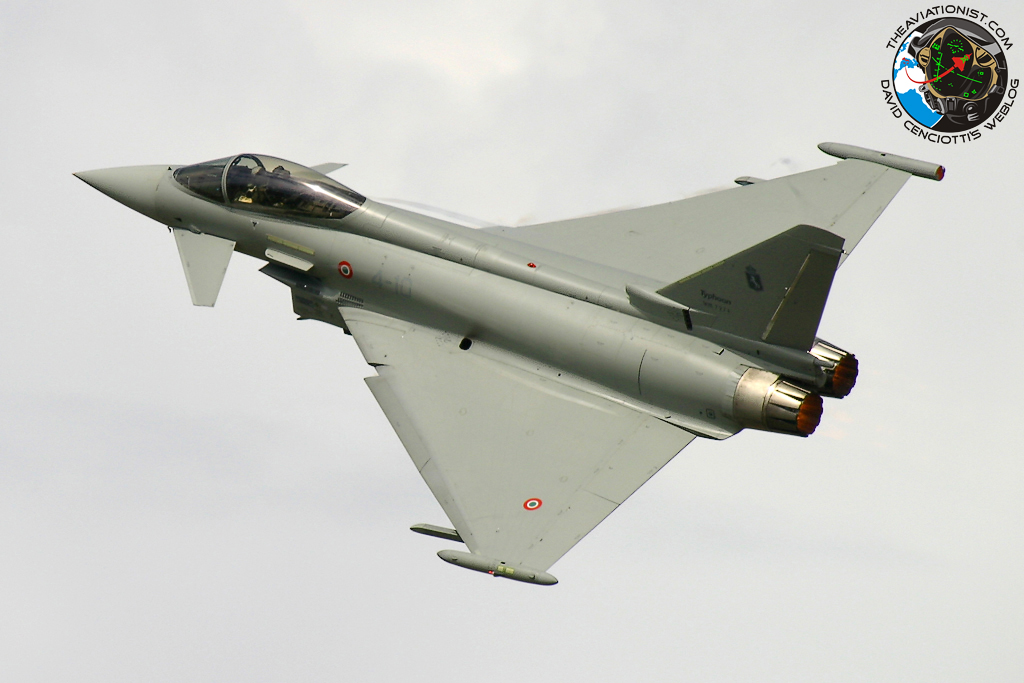Lockheed Martin claims F-35 kinematics are “better than or equal to” Eurofighter Typhoon. A Eurofighter test pilot disagrees.
In an interesting piece by Flight’s Dave Majumdar, Billie Flynn, Lockheed test pilot responsible for flight envelope expansion activities for the F-35 claimed that all three variants of the Joint Strike Fighter will have better kinematic performance than any fourth-generation fighter plane with combat payload, including the Eurofighter Typhoon (that during last year’s Red Flag Alaska achieved several simulated kills against the F-22 Raptor) and the Boeing F/A-18E/F Super Hornet.
“In terms of instantaneous and sustained turn rates and just about every other performance metric, the F-35 variants match or considerably exceed the capabilities of every fourth-generation fighter,” Flynn said.
According to the Lockheed pilot, (besides its stealthiness) the F-35 features better transonic acceleration and high AOA (angle-of-attack) flight performance than an armed Typhoon or Super Hornet.
As Majumdar says in his article, such claims are strongly disputed by other sources. Among them an experienced Eurofighter Typhoon industry test pilot, who tried to debunk all Flynn’s “theories” about the alleged superior F-35 performance.
Here’s what he wrote to The Aviationist:
No doubt the F-35 will be, when available, a very capable aircraft: its stealth design, extended range, internal carriage of stores and a variety of integrated sensors are definitely the ingredients for success in modern air-to-ground operations.
However, when time comes for air dominance, some other ingredients like thrust to weight ratio and wing loading tend to regulate the sky. And in that nothing comes close to a Typhoon, except an F-22 which has very similar values. The F-35 thrust to weight ratio is way lower and its energy-manoeuvrability diagrams match those of the F/A-18, which is an excellent result for a single engine aircraft loaded with several thousand pounds of fuel and significant armament.
But it also means that starting from medium altitude and above, there is no story with a similarly loaded Typhoon.
Dealing with the transonic acceleration:
Transonic acceleration is excellent in the F-35, as it is for the Typhoon and better than in an F/A-18 or F-16, but mainly due to its low drag characteristics than to its powerplant. That means that immediately after the transonic regime, the F-35 would stop accelerating and struggle forever to reach a non operationally suitable Mach 1.6.
The Typhoon will continue to accelerate supersonic with an impressive steady pull, giving more range to its BVR (Beyond Visual Range) armament.
For what concerns AOA:
Angle-of-attack is remarkably high in the F-35, as it is for all the twin tailed aircraft, but of course it can not be exploited in the supersonic regime, where the limiting load factor is achieved at low values of AoA.
Also in the subsonic regime, the angle-of-attack itself doesn’t mean that much, especially if past a modest 12° AoA you are literally going to fall of the sky! Excessive energy bleeding rates would operationally limit the F-35 well before its ultimate AoA is reached.
Eurofighter superb engine-airframe matching, in combination with its High Off-Bore-Sight armament supported by Helmet Cueing, has already and consistently proven winning against any agile fighter.
Last, the F-35 is capable of supersonic carriage of bombs in the bomb bay, but the fuel penalty becomes almost unaffordable, while delivery is limited to subsonic speeds by the armament itself as is for the Typhoon.
Concluding (highlight mine):
[…] it is in the facts that while the Typhoon can do most of the F-35 air-to-ground mission, vice versa the F-35 remains way far from a true swing role capability, and not even talking of regulating the skies.
Provided that the F-35 will be able to solve all its problems, and that the raising costs will not lead to a death spiral of order cuts, both the British RAF and the Italian Air Force will be equipped with both the JSF and the Typhoon.
Mock aerial combat training will tell us who’s better in aerial combat.










